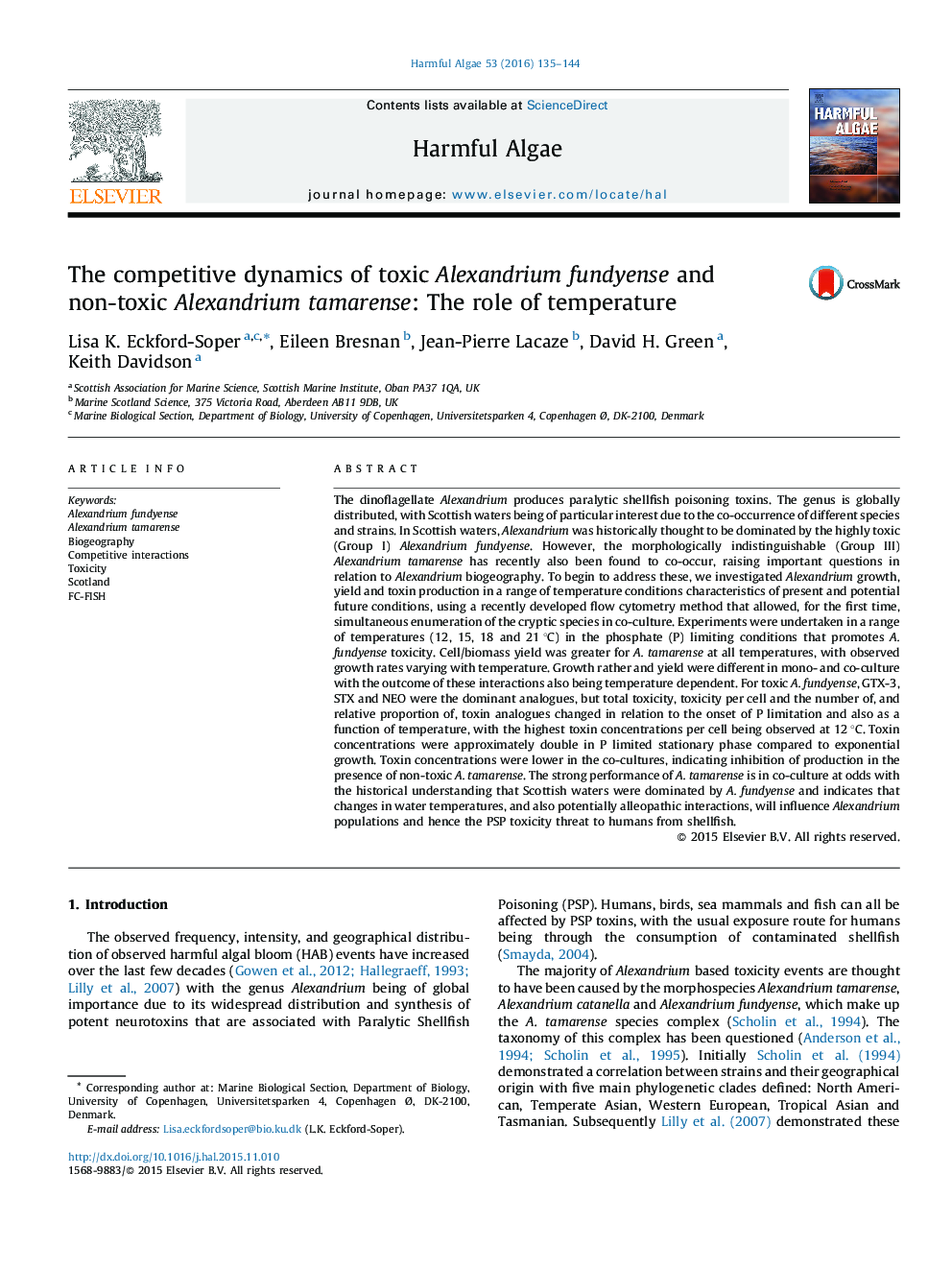| کد مقاله | کد نشریه | سال انتشار | مقاله انگلیسی | نسخه تمام متن |
|---|---|---|---|---|
| 6386095 | 1626918 | 2016 | 10 صفحه PDF | دانلود رایگان |

- Yield, growth and toxin production of A. fundyense and A. tamarense were studied.
- Observed growth rates varied with temperature.
- Cell/biomass yield was greater for A. tamarense at all temperatures.
- Species interactions were temperature dependent.
- fundyense toxin production was inhibited in co-culture with A. tamarense.
The dinoflagellate Alexandrium produces paralytic shellfish poisoning toxins. The genus is globally distributed, with Scottish waters being of particular interest due to the co-occurrence of different species and strains. In Scottish waters, Alexandrium was historically thought to be dominated by the highly toxic (Group I) Alexandrium fundyense. However, the morphologically indistinguishable (Group III) Alexandrium tamarense has recently also been found to co-occur, raising important questions in relation to Alexandrium biogeography. To begin to address these, we investigated Alexandrium growth, yield and toxin production in a range of temperature conditions characteristics of present and potential future conditions, using a recently developed flow cytometry method that allowed, for the first time, simultaneous enumeration of the cryptic species in co-culture. Experiments were undertaken in a range of temperatures (12, 15, 18 and 21 °C) in the phosphate (P) limiting conditions that promotes A. fundyense toxicity. Cell/biomass yield was greater for A. tamarense at all temperatures, with observed growth rates varying with temperature. Growth rather and yield were different in mono- and co-culture with the outcome of these interactions also being temperature dependent. For toxic A. fundyense, GTX-3, STX and NEO were the dominant analogues, but total toxicity, toxicity per cell and the number of, and relative proportion of, toxin analogues changed in relation to the onset of P limitation and also as a function of temperature, with the highest toxin concentrations per cell being observed at 12 °C. Toxin concentrations were approximately double in P limited stationary phase compared to exponential growth. Toxin concentrations were lower in the co-cultures, indicating inhibition of production in the presence of non-toxic A. tamarense. The strong performance of A. tamarense is in co-culture at odds with the historical understanding that Scottish waters were dominated by A. fundyense and indicates that changes in water temperatures, and also potentially alleopathic interactions, will influence Alexandrium populations and hence the PSP toxicity threat to humans from shellfish.
Journal: Harmful Algae - Volume 53, March 2016, Pages 135-144